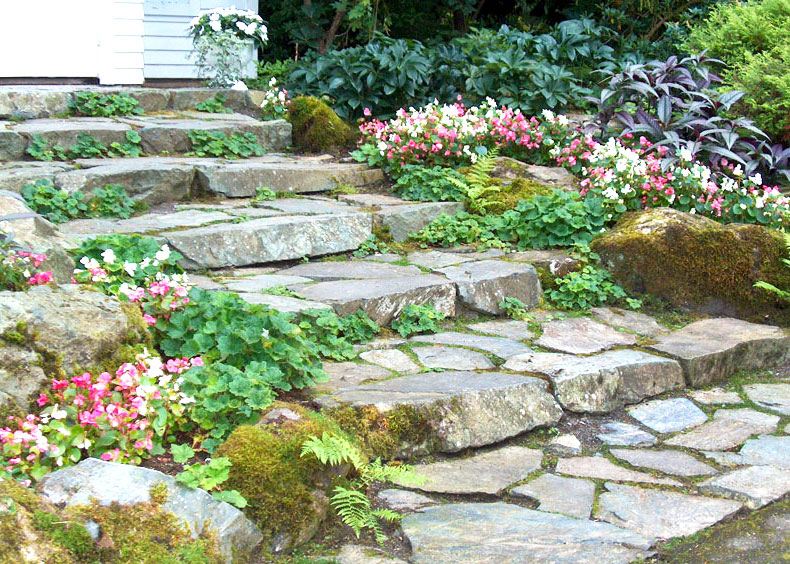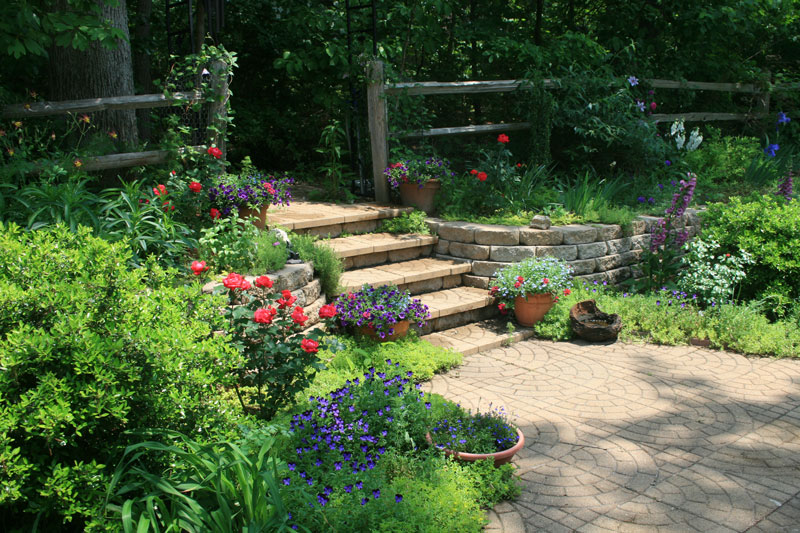Step up garden style – by Diane Morey Sitton
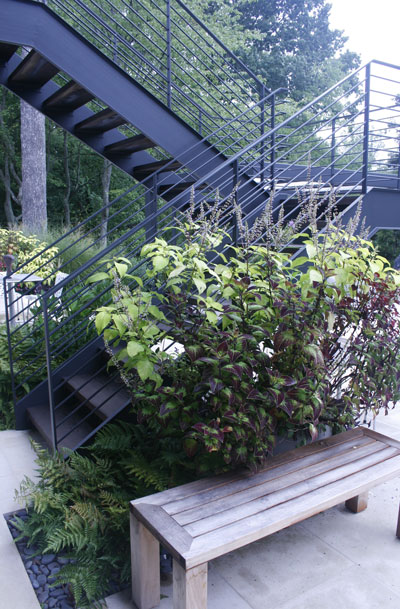
Whether spacious wrap-around steps that cascade downward from a deck, stone slabs that wind up a hill, or cantilevered platforms which seem to float in the air above flowers and foliage, when garden steps exceed their primary function of taking you from one level to another, they become a mesmerizing part of landscape design.
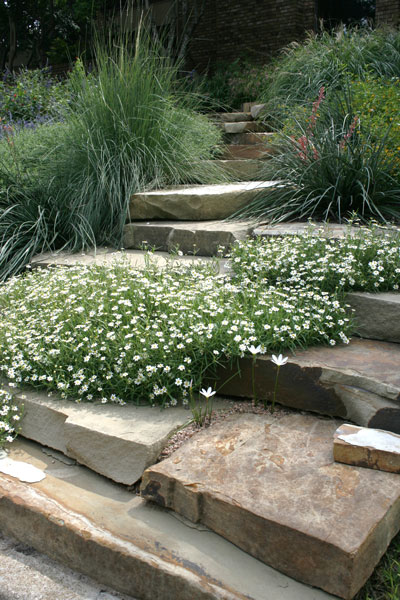
To make the most of elevation changes in your garden, start by determining the mood you wish to convey. Each garden has its own personality, and when thoughtfully designed, steps can enhance that unique style.
Start by determining the materials you wish to use. Stone offers durability, but not all stone is alike. Limestone and sandstone have a natural friendliness, an “at home” quality that makes them a good choice for cottage gardens and country gardens. On the other hand, slate complements modern settings. Wood steps are versatile and economical. Wood can be painted, stained or treated with weather- and wear-resistant products. Brick steps enhance classic-style landscapes.
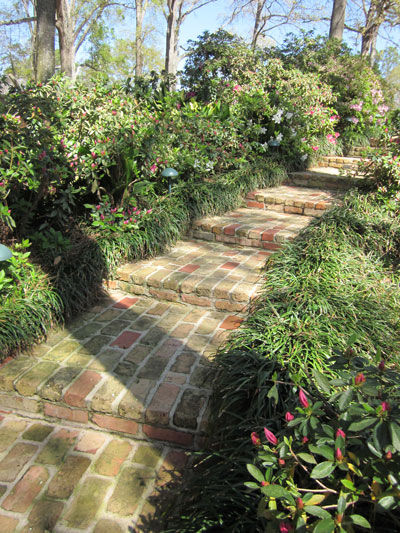
Dimensions, too, are an important element of step design. Steps that are too high or too narrow are not only uncomfortable, they are a hazard. For outdoor steps, experts recommend making each riser – the vertical part of each step—a consistent height from 5.5 to 7 inches. Make step treads at least 12 inches wide.
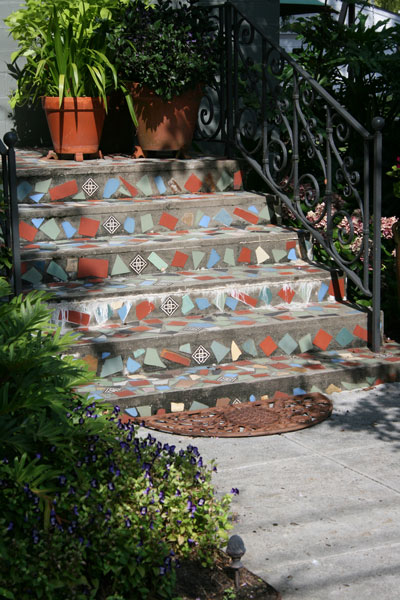
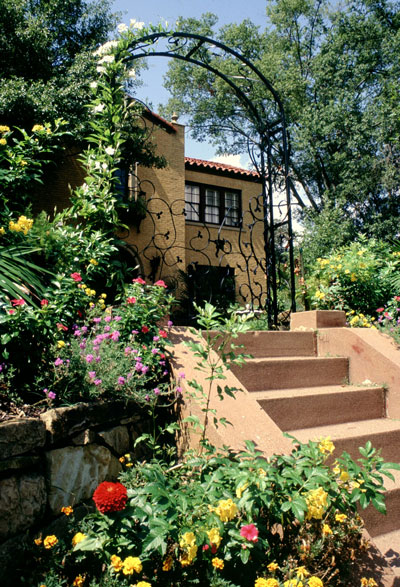
When designing for landscapes keep in mind that broad steps not only create the illusion of space, but when descending from a deck or porch, they serve as informal seating and places to display container-grown plants. And whether they transport you from one level of a terrace to another or from a lawn to an elevated patio, the width of the steps should be proportional to their destination.
Like most landscape features, steps are most pleasing to the eye when they are grounded by flowers and foliage. Soften their edges by growing thyme, mint, rosemary and other scented plants that release their fragrance when brushed against. On sloping terrain, construct planter boxes or create plant-filled terraces alongside steps. Link steps to seating or to water features or fences. Frame them with arbors. Grow vines on handrails. Make the most of cantilevered steps by planting in the garden space underneath.
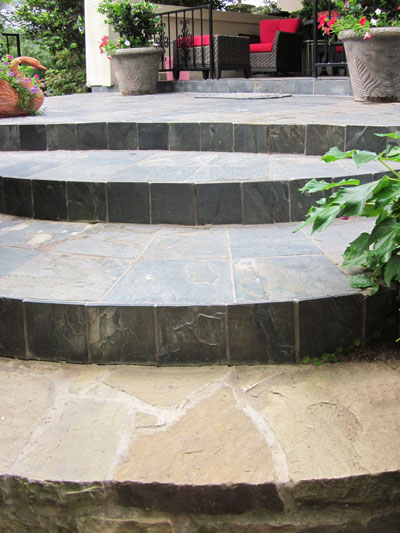
Outdoor steps present endless opportunities for design and self-expression. When carefully planned, they not only elevate gardens from one level to another, they elevate garden style.

